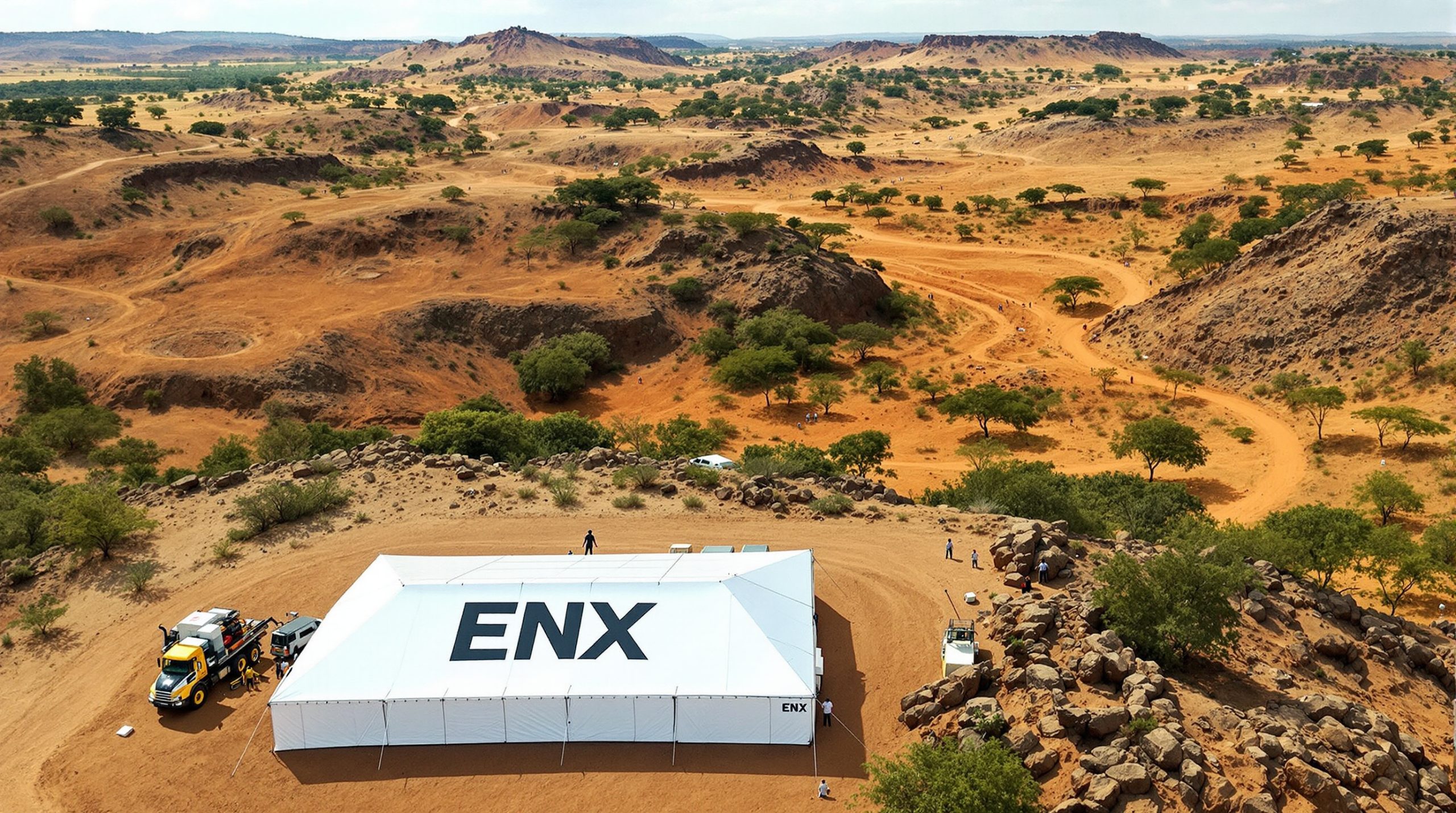Red Mountain Uncovers Promising New Antimony Zones at Armidale Project
Red Mountain Mining (ASX: RMX) has discovered multiple high-grade antimony soil anomalies at its 100% owned Armidale Antimony-Gold Project, extending the known mineralisation footprint significantly beyond the historical mining areas.
Major Expansion of Antimony Mineralisation Target
Recent soil sampling has revealed two major new antimony-rich zones at the company's Oaky Creek prospect. The most significant find is a soil sample containing 333 ppm antimony – a highly anomalous result discovered 400 metres north of the Oaky Creek South historical workings.
The soil sampling programme has identified:
- A newly defined south-east extension from Oaky Creek North, extending approximately 1 kilometre from the historical mining area
- A previously undiscovered northern antimony trend at Oaky Creek South with values up to 333 ppm Sb
- Evidence of a widespread mineralisation system spanning 2.3 kilometres along the Namoi Fault and extending up to 400 metres perpendicular to the fault
The comprehensive soil sampling grid has effectively mapped the distribution of antimony across the Oaky Creek area, suggesting the presence of multiple parallel vein systems that could significantly expand the project's resource potential.
"These soil sampling results have considerably expanded our understanding of the mineralisation footprint at Oaky Creek, revealing extensive new target areas beyond the historical workings," stated Red Mountain Mining's technical team.
Gold Potential Emerging Alongside Antimony
While Red Mountain Mining's Armidale Antimony Project is primarily known for antimony, the soil sampling has also revealed promising gold values. A notable gold-in-soil anomaly was identified on the strike extension of the Oaky Creek North trend, coinciding with a 99 ppm antimony soil sample.
At Oaky Creek South, gold values were detected just west of the historical workings, confirming the project's polymetallic potential as part of the mesothermal metal suite typical of the Southern New England Orogen, which includes Au-Sb-As-Ag-Hg-W associations. Similar to Trigg Minerals' high-grade antimony gold projects, Red Mountain's findings indicate significant potential for both minerals.
Understanding Mesothermal Mineral Systems
Mesothermal mineral systems are formed by hydrothermal fluids moving through structures in the earth's crust. These systems typically produce vein-style deposits with distinct metal associations.
In the Southern New England Orogen, antimony mineralisation is often accompanied by gold, arsenic, silver, mercury, and tungsten. The distribution of these metals can help identify extensions of known mineralisation and potential new ore shoots.
At Oaky Creek, arsenic shows a wider distribution than antimony and may be outlining potential extensions to the stibnite vein system. This multi-element approach to exploration increases the likelihood of discovering economically significant mineralisation, similar to what Many Peaks Minerals observed in their recent exploration campaigns.
| Metal Association | Significance for Exploration |
|---|---|
| Antimony (Sb) | Primary target mineral, direct indicator of stibnite mineralisation |
| Gold (Au) | Valuable co-product, often associated with antimony in this region |
| Arsenic (As) | Pathfinder element, may indicate wider mineralised envelope |
| Silver (Ag) | Potential byproduct, adds economic value |
| Mercury (Hg) | Indicator of epithermal overprint |
| Tungsten (W) | Associated with deeper parts of the system |
Structural Controls on Mineralisation
Red Mountain Mining's geological team has identified key structural controls on the antimony mineralisation at Oaky Creek. The soil sampling results support their interpretation that the area contains multiple parallel stibnite vein systems with different orientations:
- Oaky Creek North structures trend northwest
- Oaky Creek South structures trend northeast
The company believes this change in orientation is due to movement along the Namoi Fault, which bisects the project area with Oaky Creek North on the east side and Oaky Creek South on the west.
Strategic Position in Australia's Premier Antimony Province
Red Mountain Mining's Armidale Antimony Project occupies a strategic position in Australia's most significant antimony province. Located approximately 100km west of Larvotto Resources' (ASX: LRV) Hillgrove Project and several of Trigg Minerals' (ASX: TMG) antimony projects, Red Mountain's tenement extends for 85km immediately west of the Peel Fault.
The Southern New England Orogen is recognised as Australia's premier antimony province, with hydrothermal quartz veins, breccias, and stockworks often containing associated gold and/or tungsten mineralisation. Recent developments from Warriedar Resources at their Ricciardo gold deposit further highlight the region's potential for high-grade antimony discoveries.
Next Steps for Exploration
Red Mountain Mining is awaiting rock chip assay results, expected by the end of June, which will provide further confirmation of the mineralisation potential at Oaky Creek. These results, combined with the soil sampling data, will guide the company's next exploration phase.
The discovery of multiple new antimony-rich zones significantly expands the exploration potential of the Armidale project, positioning Red Mountain Mining to potentially define a substantial antimony-gold resource in a region known for high-grade antimony mineralisation. Furthermore, Inca Minerals' progress towards Stunalara acquisition demonstrates the increasing corporate interest in securing strategic mineral assets in Australia.
Why Investors Should Take Notice
Red Mountain Mining's Armidale Antimony-Gold Project presents a compelling investment case:
-
Strategic Critical Mineral: Antimony is classified as a critical mineral by major economies including the US, EU, and Australia due to supply concerns and its importance in defence, battery technology, and flame retardants.
-
Expansion of Known Mineralisation: The soil sampling has significantly expanded the known mineralisation footprint, suggesting potential for a much larger resource than previously recognised.
-
Gold Co-product Potential: The presence of gold adds significant economic potential to the project, potentially improving overall project economics.
-
Underexplored Region: Despite the Southern New England Orogen containing over 400 known mineral occurrences along the Peel Fault System's 400km strike extent, less than 200 mostly shallow drillholes have been completed over its length.
-
Multiple Exploration Targets: The identification of separate mineralised trends at both Oaky Creek North and South provides multiple targets for follow-up work.
As Red Mountain Mining awaits rock chip assay results and plans its next exploration phase, investors should watch closely for further developments at this promising antimony discovery with exploration potential at the Armidale Antimony-Gold Project.
Want to Catch the Next Major Mineral Discovery Before the Market?
Discovery Alert's proprietary Discovery IQ model instantly notifies investors of significant ASX mineral discoveries like Red Mountain's antimony find, providing actionable insights before the broader market moves. Explore historic examples of exceptional returns from major discoveries by visiting Discovery Alert's dedicated discoveries page.




